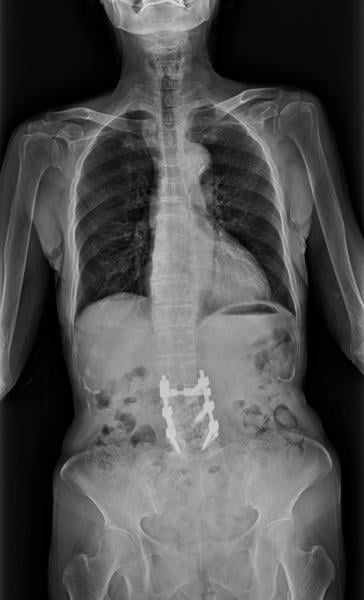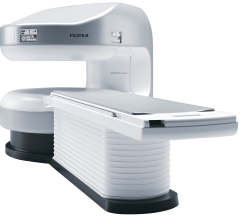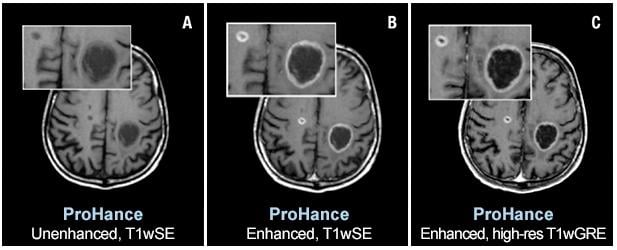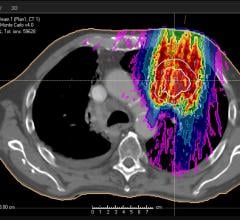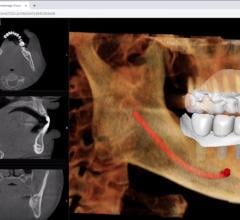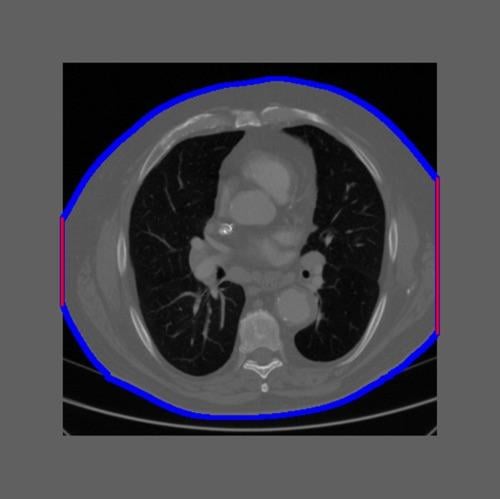Rural America does not show up in any atlas but, geographically, it accounts for 80 percent of the United States’ land ...
Recent advances in digital radiography (DR) are increasing demand for whole spine imaging before, during and after back ...
Low doses of radiation equivalent to three computed tomography (CT) scans, which are considered safe, give cancer-capable cells a competitive advantage over normal cells in healthy tissue, scientists have discovered. Researchers at the Wellcome Sanger Institute and the University of Cambridge studied the effects of low doses of radiation in the esophagus of mice.
Fujifilm’s APERTO Lucent is a 0.4T mid-field, open MRI system addressing today’s capability and image quality needs ...
Macrocyclic contrast agents have the best safety profile of all the magnetic resonance (MR) contrast media that are now ...
Paragon Biosciences LLC announced the launch of its seventh portfolio company, Qlarity Imaging LLC, which was founded to harness the value of artificial intelligence (AI) to improve medical outcomes. Qlarity Imaging will further develop QuantX, the U.S. Food and Drug Administration (FDA)-cleared computer-aided breast cancer diagnosis system.

SPONSORED CONTENT — Fujifilm’s latest CT technology brings exceptional image quality to a compact and user- and patient ...
On June 30, 2019, the Centers for Medicare & Medicaid Services (CMS) announced the Johns Hopkins University School of Medicine has been designated a qualified provider-led entity (qPLE). This allows Johns Hopkins to develop criteria that meet the requirements of the federal Protecting Access to Medicare Act (PAMA) of 2014 when ordering diagnostic imaging tests such as computed tomography (CT) scans, magnetic resonance imaging (MRI) scans and nuclear imaging in the emergency department and ambulatory settings.
SPONSORED CONTENT — Fujifilm’s latest CT technology brings exceptional image quality to a compact and user- and patient ...
Approximately 30 percent of a hospital or health system’s profit comes from imaging according, to Imaging Market Trends ...
The Centers for Medicare and Medicaid Services (CMS) issued a proposal for an advanced alternative payment model (APM) for radiation oncology on July 10, 2019. In response, the American Society for Radiation Oncology (ASTRO) issued the following statement from Paul Harari, M.D., FASTRO, chair of the ASTRO Board of Directors.
July 17, 2019 — The U.S. Food and Drug Administration (FDA) Center for Devices and Radiological Health (CDRH) announced ...
SPONSORED CONTENT — EnsightTM 2.0 is the newest version of Enlitic’s data standardization software framework. Ensight is ...
The International Association for the Study of Lung Cancer (IASLC), Guardant Health, the Global Lung Cancer Coalition (GLCC) and AstraZeneca announced the Lung Ambition Alliance, a new partnership with a bold ambition to eliminate lung cancer as a cause of death. The first goal of the alliance will be to double five-year survival for patients with lung cancer by 2025.
July 17, 2019 — Treating prostate cancer with higher doses of proton therapy over a shorter amount of time leads to ...
A lot of computers are being made without disk readers, an indication that this form of media is on the way out. So why ...
Did you know that approximately one-third of all the data in world is created by the healthcare industry and that ...
July 16, 2019 — Computational pathology company Paige announced the publication of an article in Nature Medicine ...
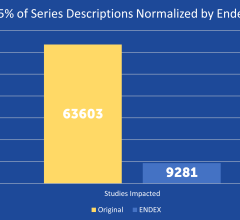
SPONSORED CONTENT — EnsightTM 2.0 is the newest version of Enlitic’s data standardization software framework. Ensight is ...
Anatomage Inc. released an update to the Anatomage Cloud platform that allows medical and dental professionals to quickly send 3-D DICOM volumetric data to colleagues for one-click review. The updated version provides a U.S. Food and Drug Administration (FDA)-approved 3-D DICOM web viewer with new tools such as measurements, the ability to discuss cases with messaging, viewing of mesh file types such as STL and more.
ViewRay Inc. announced that the company's MRIdian System is the focus of more than 40 abstracts selected by the American Association of Physicists in Medicine (AAPM) for presentation during their 2019 Annual Meeting, July 14-18 in San Antonio, Texas.
NorthStar Medical Radioisotopes LLC announced completion of construction on its 20,000-square-foot molybdenum-99 (Mo-99) processing facility in Beloit, Wis., with equipment installation currently underway. Establishing this processing facility is part of NorthStar’s staged development and dual processing pathway approach to expanding current capacity and efficiencies in Mo-99 production.
RaySearch has released RayCare 3A, a new version of the next-generation oncology information system (OIS). RayCare is designed to support the workflow in a modern oncology center, connecting the different oncology disciplines, boosting efficiency and ensuring optimal use of resources. RayCare is being continually developed in collaboration with some of the leading cancer centers worldwide, according to RaySearch.
Featuring dual detectors, the Instadose2 dosimeter addresses international requirements for independent deep [Hp(10)] and shallow [Hp(0.07)] measurements of both photon and beta radiation.
One of the main benefits of a radiation dose management system is the possibility to automatically generate alerts when the dose exceeds certain thresholds. These dose thresholds are mainly based on national Diagnostic Reference Levels (DRLs), which are defined for a standard-sized patient. An advanced dose management system offers the possibility to automatically select the group of patients by defining a patient size range in terms of weight, effective diameter or Water Equivalent Diameter (WED). As weight is not always filled in, WED, an attenuation-based metric, has become the favourite parameter to indicate patient size. But how accurately is WED calculated? Are we sure that our group of standard-sized patients does not include patients with wrong size calculation? Especially when everything happens automatically, how can we know that a high dose alert does not indicate a bigger patient for whom the size was not correctly calculated?


 July 19, 2019
July 19, 2019 
